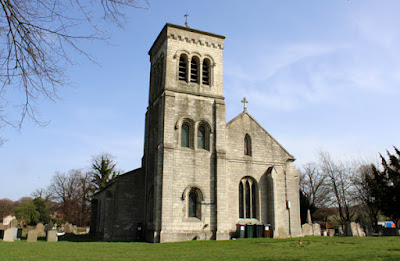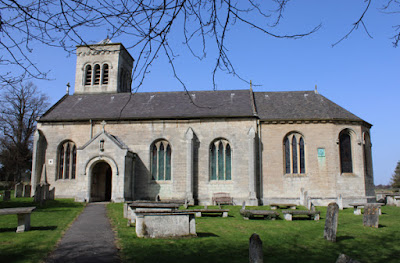During my exploration of the vernacular architecture along New Road in Firbeck, I stopped to have a quick look at the exterior of St. Martin’s church, which was completely rebuilt on the site of the mediaeval church in 1820.
Entering the churchyard and taking my first look at the south elevation, I immediately noticed variations in the colour of the masonry. The chancel, which was remodelled with an apse in 1877, has developed a pinkish coloured patina that contrasts with the generally light grey coloured stone of the rest of the church.
Although some of the stonework to the south side of the nave also has a slight pink colouration, the west end has a uniform grey colour that is most usually seen in weathered Permian dolomitic limestone, including the tower that was built in 1900.
Except to note the Romanesque style of the windows and their surrounds, on this occasion I didn’t take too much notice of the architectural features of the church and was more concerned with taking a few record photographs of the stonework.
The north elevation was thrown into deep shade by the very bright sunshine and, as I had been trying to get used to the exposure settings on a new Canon EOS 2000D camera - which didn’t seem to function as well as my Canon G16 Powershot that I had sent away for repair - I didn’t take much notice of the north aisle.
This was added in 1844 and, when later examining my photographs, it is quite easy to see the change in the roofline where the aisle was added to create what Pevsner describes as a “hideous neo-Norman north arcade”.
Romanesque styling is again used for the windows to the chancel, with label stops of a design that I hadn’t encountered before, but again I didn’t look at the details closely and just made observations of the pinkish colour of the stone from a distance.
This colour is seen in other buildings in the village and the Victorian part of St. Peter’s church in Letwell, which were all built at approximately the same time. This suggests that the stone may well have been taken from the same local quarry, but I do not have any evidence for this.
Although stained green from the run off, which has washed the stone over the years, the masonry below the bronze sundial on the chancel has not developed a pink patina. Without examining the masonry in detail, I just took photographs of this and the statue of St. Martin above the porch.
I then had a quick look around the churchyard, where there were a few dolomitic limestone table tombs and a couple of Commonwealth War Graves Commission (CWGC) headstones, which are made in Portland limestone.











No comments:
Post a Comment